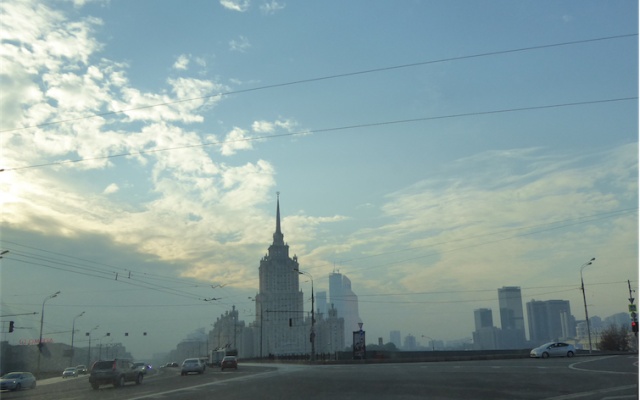PART 1
(PART II of this essay available here)
Should Polishness have defined boundaries, or should it, rather, be an open cultural plateau, unrestricted by any demarcation lines? Liberal circles – and I use the term very broadly here as opposed to equally broadly understood conservative circles – will usually answer the question by advocating openness and the interaction of Polish culture with that of neighboring and other countries. If we take a closer look at the reality, and especially on the eastern borderland of Polish culture it transpires, however, that matters are not as simple as many idealists might wish. I would, therefore, like first of all to point out certain paradoxes that emerge from the juxtaposition of what can in a simplified manner be called the liberal and conservative answers to the question of the possibility of the interaction of Polish culture with neighboring cultures. From the radically liberal point of view, which – in a theoretical dimension – is usually close to a constructivist approach, clear-cut differences in identity are often considered “artificial.” They usually appear to be distinctions that have been arbitrarily introduced and that needlessly divide people who are equal. From such a perspective, conservatives are frequently critically perceived as those who, for no good reason, dwell on the primordial nature of national groups and the differences between them along the so-called essentialist conception of the nation, that is to say – they treat them as something that exists in reality. In the liberal stance, there are recurrent declarations of openness, and a recognition of fluid identity and the fusion of cultures. Among conservatives, pronouncements are more common on the differences between one’s own identity from that of significant others, as well as on canons and imponderables. In the liberal approach, especially with a clear pro-European and left-wing stance, identity transgression should thus, in theory, be accepted in a positive way – as distinct from the conservative approach, where it would be viewed negatively, since the assumption there is of a normative attitude to the boundaries of national identity. Even more frequently, this approach endeavors to define unequivocally universal criteria of national identity, setting out clear demarcation lines between identities, nations, and cultures.
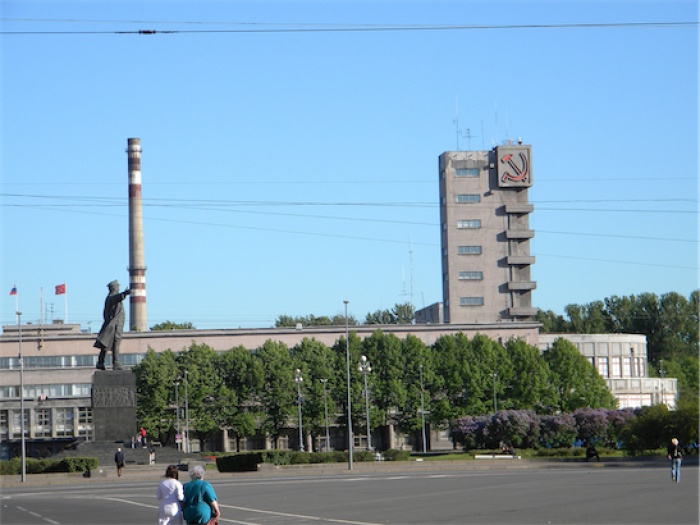
Pomnik Sergieja Kirowa w Petersburgu / Saint Petersburg, Monument to Sergey Kirov on Kirovskaya Ploshchad fot. author
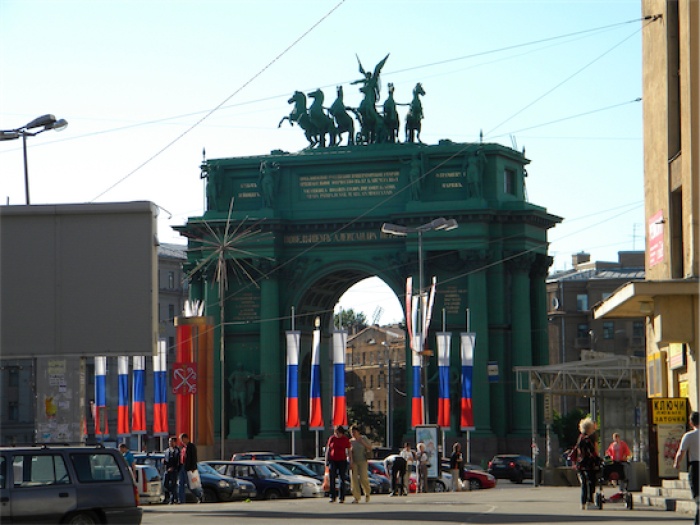
Łuk triumfalny Narwy, Petersburg / Saint Petersburg, Narva Triumphal Arch, fot. autor
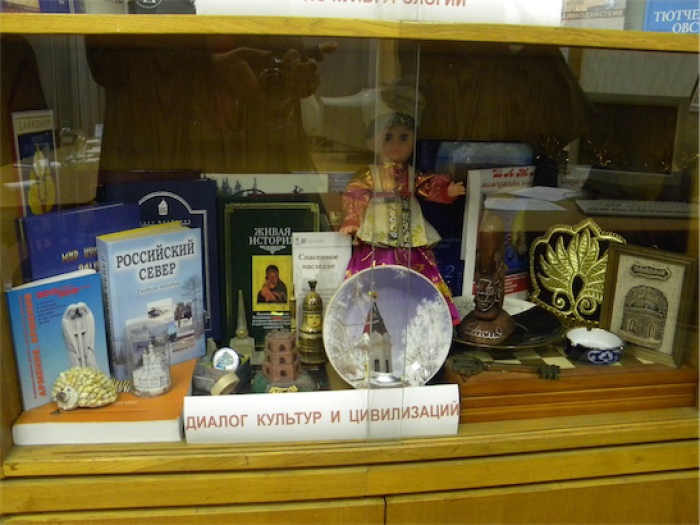
Moskwa, Gablota w dawnej Akademii Nauk Społecznych przy KC KPZR / Moscow, Display cabinet in former Academy of Social Sciences, part of Politburo of the Communist Party of the Soviet Union / fot. author
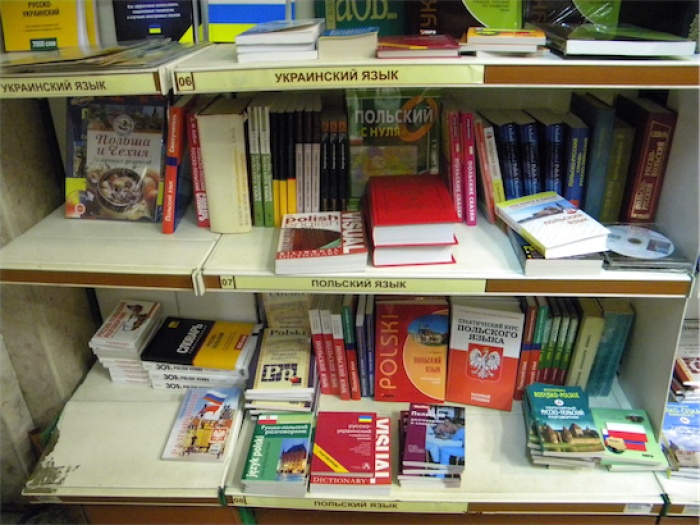
Księgarnia w Moskwie / Bookstore display in Moscow / fot. author
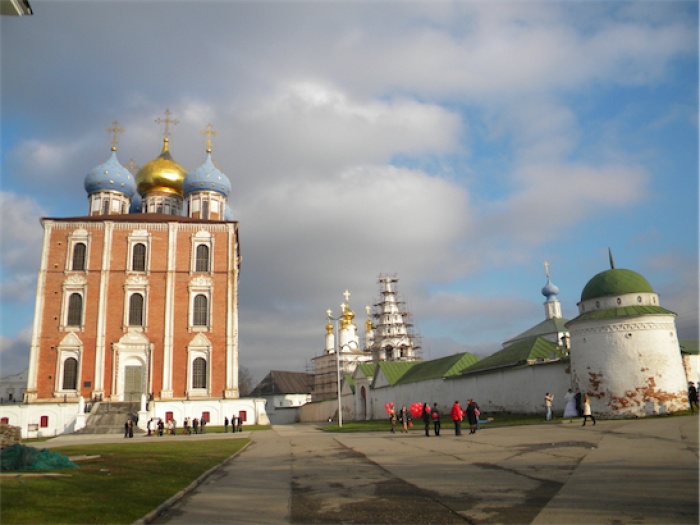
Kremlin of Ryazan / Kreml w Riazaniu, fot. autor
When, however, we consider that a contemporary nation can be understood primarily as a political entity, it turns out that if such a community does have clear-cut boundaries; these are both spatial and cultural and, significantly, these dimensions are usually connected. For this reason, political – that is to say, civic – identity is restricted by certain clearly delineated frameworks, which in practical terms are, perhaps, more important for liberals than they are for conservatives. It is the case that civic identity can never be fully distinguished from cultural or national identity, as idealistic constructivists might hope, since they seem to suggest that culture is a space of free expression that need not be related to political or economic constraints. One can of course adopt this stance as a form of idealistic postulate and attempt as far as possible to enhance it through the sphere of cultural freedom, or else propagate cultural revolutions or reforms regardless of the will of politicians and other actors. To assume the position of a researcher, however, makes one inclined to take into account the dependencies that exist in the social world. To a greater or lesser degree, these are responsible for the fact that the forms a culture adopts are usually very much connected with the nation-state in which it develops. These dependencies mostly stem from the natural links between broadly understood culture with civic or political culture. This relationship is also clearly visible in the case of multicultural countries, which, albeit not numerous, do exist in Europe. Classical examples, as we know, are Switzerland or Belgium. Belgium does not have a national language of its own and uses two languages that are dominant in neighboring countries; nevertheless, to be a Belgian is certainly something more than merely having a Belgian passport and a familiarity with Belgian political culture. The quality of being Belgian is, in practice, quite clearly distinguishable from being French or Dutch, and being Flemish or Walloon is linked to a significant specific culture, which also incorporates the language. Just as, for Belgians, it is the French and the Dutch who are the significant others, so the Belgians themselves play a specific role in the definition of these two national cultures, as can be seen from the many innocuous jokes, to seek no further, which do, however, stem from deeper cultural differences.
An even more interesting case is that of Austria and its cultural distinction from Germany. It can be seen that what separates these two German-speaking countries is not only a matter of historical legacy but, in equal measure, a principally political matter. The prospect of Austria and Germany becoming a single entity or even coming closer in terms of their identities will probably for a long time yet continue to be a taboo – which, interestingly, is much stronger for liberal circles than for conservative ones. The case of Austria shows very well, I think, the importance of the boundary separating national identities and the strong connection between such a boundary and political and geopolitical logic. For these reasons, as I have pointed out, the existence of such a boundary is even more important for liberals, although they usually construct it employing different tools from the conservatives. I would like to demonstrate that this principle can also be observed in the case of Poland.
One could probably say that the liberal variant of the definition of Polishness is open to being relatively freely negotiated in circles that are not subject to external political jurisdiction. Liberal Polishness means a greater openness to formal internal variety, which nevertheless need not entail an equality-based approach, since many of the hierarchies set up by liberal society remain hidden. Liberal attitudes are thus not usually devoid of profound normative premises, concerning the necessity of applying some ideal canon of Polishness. Such premises are usually, however, presented differently, and the visions of how to propagate them differ. The conservative variants of Polishness can be considered as characterized by a stronger focus on unification and frequently expected to be endorsed by institutions; they can be simultaneously considered more expansive, since they are freer to venture beyond the political borders of the country. Meanwhile, liberals appear more focused on a sui generis “border control” between the national culture and the neighboring cultures. To my mind, this is especially noticeable in relation to the Polish eastern border, and in particular the Polish-Russian cultural boundary.
Before we take on board the East – and here, this term is used to refer to the lands and countries lying to the east of Poland, such as Ukraine, Belarus, the Baltic Republics, Russia and some other former USSR republics – it may prove an interesting juxtaposition to take a look at the West. The Polish-German border seems above all to be far more unequivocal than the eastern border. It has of course been much more unambiguous culturally, linked as it has been with the sturdy, structural and linguistic distinctiveness of the Slav and German worlds. This distinctiveness was additionally reinforced by the tragic events of World War II, the shifting of national borders, and the post-war expulsions based on ethnic criteria. From the historical perspective, however, it is also possible to point to numerous instances in which this distinctiveness has become diluted, to take as an example the many centuries of German settlement on Polish lands or the Slav presence in regions which later became parts of Prussia and Germany, which has to the present day left a visible legacy west of the Oder. We do, however, have in Poland live cases of some blurring of Polish and German identity, of these the most obvious being the dispute surrounding the Silesian identity, connected with the matter of Silesian autonomy as well as disagreements about the very existence of the Silesian nation and language.
The right-wing stance in this matter is usually uncompromising, whereas liberals present a relative variety of approaches, tending towards advocating the freedom to choose one’s identity and an acknowledgement of the right of individuals to assert their German and also Silesian identity, always treated as an issue of nationality, which is in most of the Central and Eastern European states clearly distinguished from that of citizenship. In other words, the Central and Eastern European definition of “nationality,” in particular in its liberal versions, seems to be close to the Western notion of ethnic identity understood as a matter of individual choice. This position seems to go hand in hand with an assumed premise that the neighboring countries will adopt a similar attitude, and in particular, that they will not exploit national cultural diversity to undermine the political sovereignty of Poland within the country’s own territory. Another glaring example of the ambivalence at the Polish-German cultural boundary in the public sphere is the scandalous affair of Donald Tusk’s “grandfather in the Wehrmacht,” which has become a part of the dominant logic of the Polish political scene. Nevertheless, this notorious case was merely fallout from the Polish-German fusion within the German nation-state. In this context, let us also recall those numerous Polish citizens, who in the post-war period availed themselves of West German legislation that enabled them to acquire or to have acknowledged their German citizenship on the basis of proof that their ancestors had had such citizenship. West Germany opened its doors to them, hoping for their speedy assimilation; yet their presence in Germany unleashed arguments about the status of the Polish minority – in particular multiplying voices calling for reinstating the legal privileges of the group, nullified by the Nazis in 1939 – which still fester today. As is well known, the liberal approach assumes a readiness to adopt the German stance, which is fundamentally based on the premise that such people are not Poles, but rather Germans of Polish extraction, or possibly Poles who are temporarily residing in Germany. In turn, a more conservative approach predicates a persistence in acting to force Berlin to recognize the past privileges of the Polish minority in Germany, thus in a sense seeking support for activities aiming to strengthen the cultural ambivalence of that sizable group of immigrants from Poland. The conservative position is thus not only more expansive but also strongly in favor of the ambivalence of Polish vis- à-vis German identity – striving as it does to maintain a situation where the identity of Polish immigrants living in Germany should be as multi-layered as possible, including in legal terms.
A similar paradox is noticeable on the Polish eastern cultural front. In the liberal take, declarations abound about the recognition of the privileges of the Belarusian and Ukrainian minorities, and there is also a discernible desire to maintain good relations, especially with the liberal elites to the east of Poland. It is harder to note in this approach any clear cultural ambivalence or cross-feeding. These are, however – regardless of how we feel about this – alive and well in the conservative stance, with its “Kresy ideology.” Kresy – or the Eastern Borderlands (literally “the limits”) – is usually understood as a historical region of the Second Polish Republic during the interwar period constituting nearly half of the territory of the state. Some see Kresy in even broader terms, namely as all the lands which had a historical record of belonging to the Polish-Lithuanian Commonwealth prior to its dismantling in 1795. In any case Poles were the largest ethnic group in many parts of Kresy, in particular in many of its towns until 1945, and even more so before 1917. Today, these territories are divided between Ukraine, Belarus, and Lithuania. The Kresy ideology, which is based on an idealization of the regions’ historical past and its central role for Polishness, generally makes liberals decidedly suspicious or, at the very least, disinclined to wax lyrical on the topic of the Eastern Borderlands, perceiving this as orientalist or even nationalist. It is possible to note, nevertheless, that today the Kresy narrative represents a rather broad ideological spectrum, its radical wing indeed espousing political groupings that evoke the concept of the borderlands in a nationalist or strongly orientalist context, particularly due to their firm focus on a unilateral emphasis on the historical Polishness of the lands to the east of Poland’s current borders, as well as their vilification of the nations inhabiting those lands, at the very least running them down or accusing them of being inherently nationalist and anti-Polish. As I have argued earlier,[1] the Kresy discourse can, to a large extent, be treated as internal Polish identity games – a significant part of playing games with the past among the Polish elites. At the same time, in the liberal camp, participation in reflections related to the Eastern Borderlands evokes a sense of disquiet; there is a tendency to acknowledge Poland’s eastern border as the appropriate demarcation line separating the zone where identity debates are legitimate from oriental territory, east of the Bug, that should be left to the jurisdiction of the national elites of the specific countries, expected to be as liberal as could be. It is then possible to engage in discussions with such elites by means of discussion panels, academic conferences, cultural festivals in capital cities or get-togethers organized in Western countries, where, however, usually no deeper cultural interaction takes place between those nations and, symbolically, English has become the main language of communication.
All the same, I do not wish to boil down the difficulties of liberals in coming to terms with the problems – still important for Polish culture – linked with the regions and nationalities to the east of Poland’s border today, to the tendency to constrain our imagination with the formal borders of nation states, out of fear of awaking nationalist demons.
To this day, a certain palpable void remains – fallout from the shifting of Poland’s cultural borders westward between 1917 and 1945 and the simultaneous closing off of the border to the neighboring countries. There are various possible interpretations of this void. Firstly, it can be viewed as a vacuum left behind by the loss of imperial or colonial influence over the large territory of the “Intermarium” – the “intersea” area, stretching from the Baltic to the Black Sea that in the 17th century had been part of the Polish-Lithuanian Commonwealth – and the subsequent trauma of finally losing Kresy as a consequence of World War II. Such a take reflects the conservative perception, which assumes a continuity between the Polish-Lithuanian Commonwealth, the Second Polish Republic (Poland between the First and Second World Wars) as well as the Third Polish Republic, as post-1989 Poland has come to be known. In the right-wing discourse founded on the myths propagated by the Polish writer Henryk Sienkiewicz, there is much lamentation over the loss of past power. Liberals either reject such a take, alongside other eastern narratives, as post-colonial, or rather post-imperial, or adopt a more abstract version that refers to the multicultural legacy of the First Polish Republic as having political merit that ought to be invoked.[2] More radical left-wing critics such as Jan Sowa disown this narrative, attempting to deconstruct the idealized image of the First Polish Republic as mythical and false.[3] Specifically, they suggest that relations between the Poles and other nations in the broadly conceived Eastern Borderlands were asymmetric and often oppressive. They maintain that to invoke the legacy of the Polish presence in the East is based on a falsehood and, as such, its cult is detrimental both for Poland and its relationships with the neighboring nation states.
In many respects, I agree with those who criticize the Kresy narratives, and with those who view skeptically the idealized multicultural legacy of the First Polish Republic. I note, nevertheless, that, in spite of its asymmetry and other weaknesses, these narratives are a way of dealing with the Eastern issues in the Polish national identity. In other words, they provide a tool for identifying important ingredients of Polish culture, which link it to the culture of the peoples of Eastern Europe. For these connections run sufficiently deep that for a long while yet they will not be easy to ignore nor will it be easy to establish a generally acceptable boundary of Polish culture along the symbolic river Bug. I would like to draw attention to another aspect of these connections, the watershed of which was World War I, and especially the Bolshevik revolution. We often forget that these events had a significant impact on our country in the form of the massive exodus of Poles from a vast area of what was once the Russian Empire, which after the Treaty of Riga in 1921 became part of the nascent Soviet Union. Leaving behind all their worldly goods, hundreds of thousands of Poles travelled west, never again to set their eyes on their homeland. A considerable number of the members of the Polish elite, such as landed gentry and the slowly rising bourgeoisie, lost their huge estates. Following this great exodus, entire communities, including those representing various trends in Polish political life, lost their status, influence and wealth. Among their number were the once-dynamic liberals; Liberal Atlantis[4] – the title of a book by Andrzej Jaszczuk about their fate – speaks volumes. The fate of Aleksander Lednicki[5] is symbolic of what became of them. Let us also note that hundreds of thousands of Poles who stayed abroad beyond the border set out in the Treaty of Riga were murdered by the Soviet authorities between the wars, mainly as part of the so-called “Polish operation” of the NKVD in 1937–1938.
These were the groups that until 1917 had to a large extent shaped Polish culture or, to put it more poignantly, co-created Polish civilization. Their immanent characteristic was their natural familiarity with the cultures of Eastern Europe, and Russian culture above all, as the state culture at the time, albeit that it did not dominate unequivocally throughout the Empire. This familiarity was accompanied by standards of cultural liaison, mostly lost by now. This is not to say that these standards were at all times ideal – symmetric, inclusive and fully compliant with the contemporary ideal of cultural dialogue. Throughout the huge Eastern Borderland territories, the relationship of Poles with the local, mainly Russian Orthodox, peasantry, was at all times more or less asymmetrical, at times oppressive, although it also implied some knowledge of those cultures. Polish-Russian contacts were never without their tension; nevertheless, besides the confrontational dimension which today prevails in the historical narrative, including the national uprisings, there were also quite different ingredients present. I have in mind russification, including the processes taking place among the Polish gentry and the post-gentry intelligentsia, or at least the fascination with Russian culture, which grew among Poles in the second half of the 19th century. We hardly ever remember these trends today. Indeed, those members of the Polish intelligentsia that chose the sphere of the influence of Russian culture were – to put it in dispassionate terms – excluded from the national community of memory. Let us remember that numerous Polish communities were dotted throughout the Russian Empire, often very active both culturally and in business. And it is worth adding that while beyond the so-called Congress Poland, an autonomous entity created in 1815 within the Russian Empire, in the region around Warsaw with a strong Polish ethnic majority by the Congress in Vienna – where Russia was viewed unanimously as a power occupying Polish lands – in the other parts of the Empire such a perception was not predominant in the Polish milieu. There were considerable numbers of Poles in the majority of larger Siberian towns, and tens of thousands of Poles lived in Moscow, St Petersburg and Kiev, where they were a prominent part of the social elite. Little do we know that, to this day, we often benefit from the legacy of the work put in by these generations of ethnic Poles.
At the same time, it is worthwhile mentioning the rare yet fine examples of dialogue between the Polish and Russian elites. At the turn of the 19th and 20th centuries, there are such eminent examples of this phenomenon as the figures of Włodzimierz Spasowicz or Marian Zdziechowski. It is significant that they are conspicuously absent from today’s memory canon. This is particularly true about Zdziechowski, who played a significant part not only in Polish literary criticism, but also in a broader cultural reflection at the turn of the century, including important episodes of his political activity. When studying at Vilnius University, where Zdziechowski was the rector, Czesław Miłosz considered him his most important teacher. According to Magdalena Grochowska, the figure of Zdziechowski is key to understanding the writings of Miłosz,[6] who continues, after all, to be one of the crucial points of reference for contemporary debate on Polish identity. Like many other Polish intellectuals of that time, Zdziechowski had close social and intellectual acquaintances among the Russian elite. He was thus part of the-then Polish community with multi-dimensional competence and network contacts, a cultural phenomenon that is rare nowadays. Writing in both Polish and Russian, building both cultures in parallel, people like Leon Petrażycki were at the same time “citizens of the world.” This was a community that had been blessed with having been educated at the best universities in the world at the time, and they kept up direct contact with many academic centers with an intensity that the majority of Poland’s academics today would probably envy. For these reasons, what could be called “pre-1917 landed gentry Polish culture” – which had included the standards for the contacts between Polish culture and the cultures of eastern European countries, primarily with Russia – came to atrophy and to a large extent fell into oblivion. I am not trying to suggest here that this culture ought to be re-activated or that its alternatives should be re-instituted. Nor am I claiming that this would be a natural solution to the problem described here: the existence of a certain loss in the contemporary Polish national identity. Rather, I am attempting to establish the existence of this void and use it to explain some of the contemporary problems in Polish dealings with the culture of the countries neighboring to the east. The changes that we are dealing with have been irreversible, since the post-1917 fall of Polish gentry and bourgeoisie connected with the eastern markets was not only a cultural and political process but above all material and economic. It involved a huge exodus of peoples, followed by ethnic cleansing, for such was the nature of Soviet policy towards Poles. One way or another, we must bear in mind that, more than anything else, it was the strong material position of the Polish elite in the east that made possible the development of Polish culture in these lands and shaped the interactions between Polish culture and the cultures of the region. A significant psychological aspect of this vantage point was the sense of their own value and identity that the Polish elites, both those in Eastern Borderlands and in Russia proper, enjoyed at the time. This feeling often triggered modi operandi or living patterns that were conspicuous for their panache and flamboyance. The representatives of the Eastern Borderlands elites were wont to juxtapose these characteristics of theirs – both self-admitted and attributed to them by others – with the supposed provinciality and lack of self-assuredness, flair or vigor of the Polish elites from the western parts of the country.
Thus the vision of eastern Poland as expansive, courageous, creative, wealthy and not shying away from facing challenges as well as dealing with diversity was in stark contrast to the vision of western Poland, perceived as peripheral, with an inferiority complex (supposedly in relation to a Germany that dominated it in every respect), infected with the Prussian lack of élan, its discipline taken to be cowardice. From today’s perspective, this clash of stereotypes looks quite exotic. It frankly defies the contemporary liberal construct based on the idea that it is western Poland that is superior – closer as it is both to the imagined and real West – to eastern Poland, as a country that is backward both mentally and in industrial terms. A feature of this binary model is the often one-sided idealization of the legacy of the area under the Prussian partition of Poland, as opposed to that of the lands under the Russian partition, in contrast demonized. This is the fundamental contrast that today cannot be dismantled even by the conservative narrative – in spite of its instinctive sympathy for eastern Poland, if only for the geographic location of its electoral support. If there is any mileage in glamorizing the east of Poland under Russian rule from the right-wing point of view, it is to praise it for its heroic resistance in its fight against occupying forces, especially the Russians and the Bolsheviks. Thus the defensive compensation of eastern Poland against the orientalizing liberal narrative can mainly be conducted via martyrology. Nevertheless, there do still linger in the Polish unconscious longings for the myth of the “eastern self-possession of old.” These longings are especially noticeable in right-wing circles and, as one can surmise, these are mainly fueled not so much by recollections of the powerful position of the Kresy Polish landed gentry at the turn of the century, but rather by echoes of the mythology created by the intelligentsia of the time, to be found especially in The Trilogy by Sienkiewicz. One way or another, what is being forgotten is that it is difficult to rebuild that mythical self-confidence without the material wealth on which it was once based. The majority of those that aspire to it seem to be aware only of its cultural dimension. It is therefore possible to talk today about a certain syndrome of seeking the Kresy high-and-mighty poise and aplomb, which vanished together with the genuinely rich landed gentry and bourgeois elites at the separation of Poland from the lands to the east of the Bug. As I have indicated, this syndrome is certainly stronger on the right of the Polish political scene but, even there, there is little appreciation of the role that the powerful position of the Polish land magnates and the bourgeois elite in the Eastern Borderlands before 1917 played in the phenomenon; the right is looking instead to the memory of the power of the First Polish Republic as the lost empire or to the very fact that the Eastern Borderlands were part of the Second Polish Republic, juxtaposing its subjectivity to the lack of sovereignty of the People’s Republic of Poland.
Problems with the identification of the “eastern” elements in the historically shaped Polish identity and the interaction between contemporary Polish and Russian culture as well as other cultures of the region may of course be linked to a number of other factors. One of these is certainly the prevailing orientalism, understood as the tacit assumption of the inferiority of all things eastern European. I do not consider our orientalism an invariant phenomenon and I do not see it as primarily a Polish problem or creation. To my mind, this stance has been generated by the broadly conceived “West,” which in this manner legitimizes its subjugation of Russia and the whole of Central-Eastern Europe.[7] The countries of Central Europe often unwittingly, and with great enthusiasm, replicate this orientalist attitude and often far more openly than is done in the West. It seems to me that it is precisely due to this mechanism that Russia, often imagined in different, but usually orientalist categories, remains a significant other for the Polish identity.[8] This stance often reinforces the unconscious tendency towards isolation from Russia, which also transfers to the cultural sphere. This also appears in liberal circles, albeit their orientalism tends to be expressed in more politically correct or veiled terms. All in all, there seems to exist a syndrome of symbolic “flight from the East,” and ignoring the East out of fear of being suspected of having any links with it or sympathy towards it – such are the main orientalist motives of the majority of identity narratives. Liberal Poland aspires to a definitely non-Eastern Poland – as remote as possible from everything that might be associated with anything Russian, and as close as possible to anything connected with what is perceived as Western, whatever that label might mean. Also in contemporary Polish conservatism, there is a fear of the imagined Russian identity, although this fear is perhaps less strong than the fear present in the liberal identity of Eastness as such. The methods of coping with this threatening identity include the previously mentioned myths pertaining to the Eastern Borderlands and the might of the Polish-Lithuanian Commonwealth. Of course, in the broadly-based conservative camp there are some frank russophiles but these are exceptions to the rule rather than the movers and shakers of today’s Polish right. The entire spectrum of contemporary Polish political thought shares the conviction that it is not possible for Russia to transform itself in any foreseeable future into a modern liberal state that could potentially become a friendly partner for Poland and other allied countries. This is, in fact, the underlying premise of the majority of the political transformations in Poland in recent decades as well as of Poland’s international politics and defense strategy. In other words, the authoritarian and imperialist nature of Russia and the Russians is usually taken for granted, which is, nota bene, a classical component of Edward Said’s take on the orientalist ideology. The conviction of the immanence of the perennial Russian barbarism, defined by the country’s supposedly immutable imperialist and authoritarian inclinations, seems to be a symptom of the parochialism of contemporary Poland. In this way Poland, like other peripheral countries, copies – somewhat mechanically – the dominant Western myths about eastern Europe. The country carries on in this manner in the fervent hope that its zealotry in this matter will earn it at least partial exemption from having such myths applied to itself.
Tomasz Zarycki
Translated by Anda MacBride
BIO
Tomasz Zarycki is Associate Professor and Director of the Robert Zajonc Institute for Social Studies at the University of Warsaw, Poland. He holds a “habilitation” degree in sociology from the Institute for Philosophy and Sociology of the Polish Academy of Sciences in Warsaw. His research focuses on the sociology of politics, sociology of culture, sociology of knowledge, critical sociology and discourse analysis with particular focus on Polish and Eastern European societies. His latest book in English is Ideologies of Eastness in Central and Eastern Europe (Routledge, 2014).
His earlier books include: Gra peryferyjna: Polska politologia w globalnym polu nauk społecznych (A Peripheral Game: Polish Political Sciences in the Global Field of Social Sciences, co-authored with Tomasz Warczok, Warszawa, 2016), Totem inteligencki: Arystokracja, szlachta i ziemiaństwo w polskiej przestrzeni społecznej (An Intelligentsia’s Totem: Aristocracy, nobility and landowners in the Polish social space, co-authored with Rafał Smoczyński, Warszawa, 2017), Peryferie. Nowe ujęcia zależności centro-peryferyjnych (Peripheries. New approaches to centre-periphery relations, Warsaw: Scholar, 2009), Kapitał kulturowy. Inteligencja w Polsce i Rosji (Cultural Capital. The Intelligentsia in Poland and Russia, Warszawa 2008), New Regional Identities and Strategic Essentialism. Case studies from Poland, Italy and Germany (co-author, Münster: LIT Verlag, 2007), Region jako kontekst zachowań politycznych, (Region as a Context of Political Behavior, Warszawa, 2002). His articles appeared in such journals as “Communist and Post-Communist Studies,” “East European Politics and Societies,” “Europe-Asia Studies,” “GeoForum,” “Journal of Communist Studies and Transition Politics,” “Kultura i Społeczeństwo,” “Russian Education & Society,” “Theory and Society” and several others.
[1] Tomasz Zarycki, Ziemie utracone, ziemie posiadane: normatywne uwikłania krytyki dyskursu kresowego (Lands lost, lands owned: A normative entanglement of the critique of the Kresy discourse), [in:] B. Płonka-Syroka, M. Dąsal, K. Marchel (ed.); “Doświadczenie pokoleniowe a perspektywa osobista” (Generational experience and the personal perspective), Wydawnictwo DiG, Warsaw 2016, pp. 81–96.
[2] Cf. Jan Kieniewicz, Kresy jako przestrzeń europejska, (Kresy as a European Space) [in:] J. Purchla (ed.) “Dziedzictwo kresów – nasze wspólne dziedzictwo?” (Legacy of Kresy: Our Shared Legacy?), Międzynarodowe Centrum Kultury, Krakow 2006, pp. 13–24.
[3] Jan Sowa, Fantomowe ciało króla. Peryferyjne zmagania z nowoczesną formą (The phantom body of the king: Peripheral wrestling with modern form), Universitas, Krakow 2011.
[4] Andrzej Jaszczuk, Liberalna Atlantyda. Główne nurty liberalizmu polskiego 1870-1939 (Liberal Atlantis: The main trends in Polish liberal thought 1870–1939), KB, Warsaw 1999.
[5] Tomasz Zarycki, Aleksander Lednicki i los jego środowiska, Polonii w Rosji na przełomie XIX i XX wieku jako zwierciadło przemian polskiego pola władzy (Aleksander Lednicki and the fate of his milieu: The Polonia in Russia at the turn of the 19th and 20th centuries as a mirror of the transformations in the Polish power structure), in: “Sprawy Narodowościowe,” 42/2013, 67–83.
[6] Magdalena Grochowska, Ich wyspy Galapagos. Co łączyło Czesława Miłosza z Jerzym Giedroyciem. (Their Galapagos Islands: What Czesław Miłosz and Jerzy Giedroyć had in common), “Gazeta Wyborcza”, 18–19 August 2012, pp. 24–25.
[7] Tomasz Zarycki, Ideologies of Eastness in Central and Eastern Europe, Routledge, London 2014.
[8] Tomasz Zarycki, Uses of Russia: The Role of Russia in the Modern Polish National Identity, in: “East European Politics and Societies,” 18, 2004, pp. 595–627.



